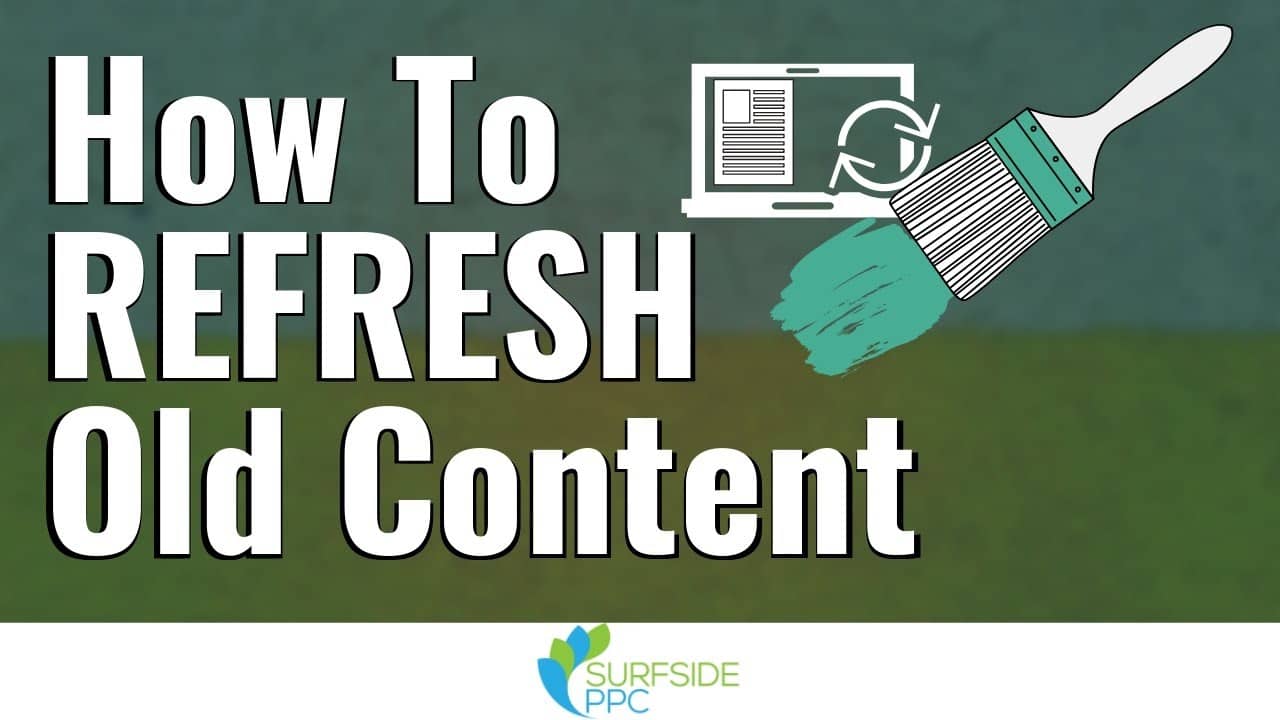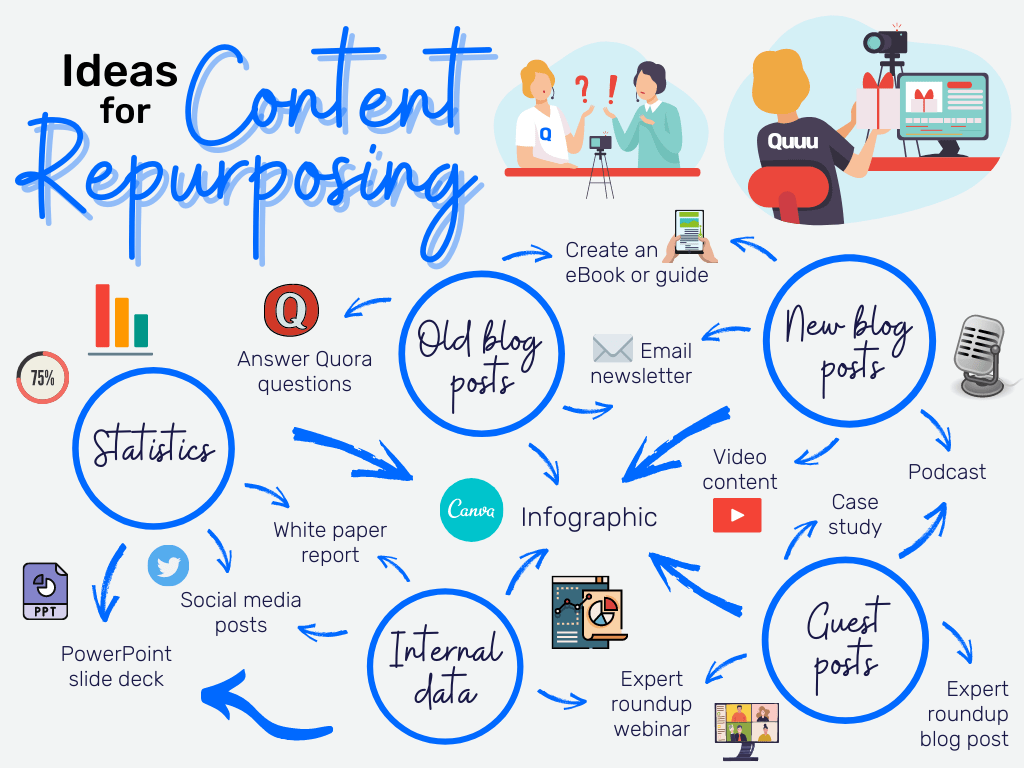Key Takeaways
- Repurposing content can significantly boost your SEO by expanding your reach and increasing engagement.
- Refreshing old content is crucial for maintaining relevance and ensuring accuracy.
- Identify which content to repurpose by auditing existing materials and analyzing performance metrics.
- Transforming content into various formats can cater to different audience preferences and platforms.
- Using the right tools can streamline the content repurposing process and enhance effectiveness.
The Evolving Importance of Content Repurposing for SEO
In the fast-paced world of digital marketing, keeping up with SEO trends is essential. Content repurposing has become a vital strategy for marketers aiming to maximize their efforts. But why has it gained such importance? It all boils down to the need for constant engagement and maintaining a fresh online presence.
When we talk about content repurposing, we’re referring to the practice of taking existing content and transforming it into new formats. This not only saves time and resources but also helps reach different audience segments. Think of it as giving your content a new lease on life.
Most importantly, repurposing content can help you tap into different platforms and mediums, ensuring that your message is seen by as many people as possible. This strategy is not just about recycling; it’s about reimagining your content to make it more impactful and accessible.

“Update Blog Posts To Increase Traffic …” from www.youtube.com and used with no modifications.
Why Refreshing Content Matters
Refreshing your content is like giving your website a fresh coat of paint. It keeps things interesting and relevant. Outdated information can mislead your audience and harm your credibility. Therefore, it’s crucial to revisit and update your content regularly.
Consider this: a blog post you wrote two years ago might still get traffic, but if the information is outdated, it could drive potential customers away. By refreshing that content, you ensure that visitors receive the most current and accurate information, which can lead to higher engagement and conversion rates.
SEO Benefits of Content Repurposing
Content repurposing offers several SEO benefits. First, it can help you target new keywords and reach a broader audience. By transforming a blog post into a video or infographic, you can optimize for different search terms and attract diverse audience segments.
Moreover, repurposed content can improve your website’s authority. When you consistently update and expand your content, search engines recognize your site as a reliable source of information. This can lead to higher rankings and increased organic traffic.
Besides that, repurposing content can also enhance your backlink profile. New formats and platforms provide additional opportunities for others to link to your content, further boosting your SEO efforts.
Identifying Content for Repurposing
Before diving into content repurposing, it’s essential to identify which pieces are worth the effort. Not all content is created equal, and some pieces will be more suitable for repurposing than others.
Audit Existing Content
Start by conducting a thorough audit of your existing content. This involves reviewing all the materials you have and evaluating their performance. Look for content that has performed well in the past or has the potential to reach a larger audience.
During this audit, take note of content that is still relevant and aligns with your current marketing goals. This will help you prioritize which pieces to repurpose and ensure that your efforts are focused on the most valuable content.
Recognizing Evergreen vs. Time-Sensitive Content
Not all content is evergreen, meaning it remains relevant over time. It’s crucial to differentiate between evergreen and time-sensitive content when considering repurposing.
- Evergreen content: This type of content is timeless and continues to provide value long after it’s published. Examples include how-to guides, educational articles, and industry insights.
- Time-sensitive content: This includes news articles, event announcements, or content tied to specific dates or trends.
Focus on repurposing evergreen content, as it has a longer shelf life and can continue to drive traffic and engagement over time.
Time-sensitive content, while important, may not offer the same long-term benefits when repurposed. However, if it aligns with a recurring event or trend, it might still be worth revisiting.
Analyzing Content Performance
After auditing your content, the next step is to analyze its performance. This involves looking at metrics such as page views, engagement rates, and conversion rates. High-performing content is an excellent candidate for repurposing, as it has already proven its value to your audience.
Tools like Google Analytics can provide valuable insights into how your content is performing. Look for patterns and identify which topics resonate most with your audience. This information will guide your repurposing efforts and ensure that you’re focusing on content that has the potential to succeed.
By understanding your content’s performance, you can make informed decisions about which pieces to repurpose and how to transform them for maximum impact.

“1. Mastering Articles: How to Elevate …” from speaknskills.com and used with no modifications.
Transforming Articles into Different Formats
One of the most effective ways to repurpose content is by transforming articles into different formats. This not only breathes new life into your content but also allows you to reach audiences who prefer different types of media. For instance, you can turn a blog post into a podcast episode or a video. This approach caters to both auditory and visual learners, expanding your reach and engagement.
Consider taking key points from an article and creating a slideshow or presentation. Platforms like SlideShare can be excellent for sharing this type of content, reaching a professional audience who may prefer digestible, visual information.
Using Visual Content
Visual content is incredibly powerful in today’s digital landscape. Infographics, images, and videos can convey complex information quickly and engagingly. Transforming your written content into visual formats can significantly enhance its appeal and shareability.
For example, if you have a data-heavy article, consider creating an infographic that highlights the most compelling statistics. Infographics are highly shareable on social media platforms, which can lead to increased visibility and traffic back to your website.
Breaking Down Long-Form Content
Long-form content, such as in-depth guides or whitepapers, can be a goldmine for repurposing. These comprehensive pieces often contain multiple sections that can be individually expanded upon or transformed into standalone pieces.
Break down a lengthy guide into a series of blog posts or social media snippets. This not only provides you with a steady stream of content but also keeps your audience engaged over time. Additionally, you can create a downloadable PDF version of the guide for those who prefer to consume content offline.
Example: A 20-page eBook on digital marketing strategies can be broken down into a series of blog posts, each focusing on a specific strategy. These posts can then be shared over several weeks, keeping the audience engaged and driving consistent traffic to your site.
By breaking down long-form content, you create multiple touchpoints with your audience, each offering valuable insights and encouraging further exploration of your content.
Leveraging Social Media Platforms
Social media platforms are excellent avenues for repurposed content. Each platform has its unique characteristics and audience preferences, so tailoring your content to fit these platforms is key. For instance, you can revolutionize your income by utilizing AI and online marketing strategies effectively on these platforms.
For instance, transform a blog post into a series of tweets or a Twitter thread, highlighting key takeaways and encouraging discussion. On Instagram, create visually appealing posts or stories using excerpts from your content, paired with engaging visuals.
Most importantly, don’t overlook platforms like LinkedIn for professional and B2B content. A detailed article can be summarized into a LinkedIn post, sparking conversations and expanding your network.
“Repurposing Content: 10 Ideas To Make …” from blog.quuu.co and used with no modifications.
Tools to Help in Content Repurposing
Utilizing the right tools can streamline the content repurposing process, making it more efficient and effective. These tools can assist in everything from content management to design and analytics, ensuring your repurposed content reaches its full potential.
Here’s a look at some essential tools that can aid in your content repurposing efforts:
Content Management Systems
Content Management Systems (CMS) like WordPress or HubSpot provide a solid foundation for managing and repurposing your content. They offer features that make it easy to update, organize, and distribute content across different channels.
Analytics and Listening Tools
Understanding how your content is performing is crucial for effective repurposing. Tools like Google Analytics and social media listening tools can provide insights into which pieces are resonating with your audience.
These tools allow you to track key performance metrics, such as engagement rates and traffic sources, helping you make informed decisions about which content to repurpose and how to optimize it for better results.
Design and Multimedia Tools
Design tools like Canva or Adobe Spark are invaluable for creating visually appealing content. Whether you’re designing infographics, social media graphics, or video thumbnails, these tools offer user-friendly interfaces and a wide range of templates to choose from. For those interested in expanding their skills, exploring opportunities in freelance UX/UI design can be a rewarding avenue.
Additionally, multimedia tools like Audacity for audio editing or iMovie for video editing can help you transform written content into engaging podcasts or videos, reaching audiences who prefer these formats.
Measuring the Impact of Repurposed Content
Once you’ve implemented your content repurposing strategies, it’s essential to measure their impact. This involves tracking various performance metrics to understand how your repurposed content is performing and whether it’s achieving your desired goals.
Tracking Key Performance Metrics
To gauge the success of your repurposed content, tracking key performance metrics is essential. Start by setting clear objectives for each piece of repurposed content. Are you aiming to increase traffic, engagement, or conversions? Knowing your goals will help you determine which metrics to focus on.
Common metrics to track include page views, social media shares, and time spent on page. These indicators can provide insights into how well your content is resonating with your audience. If you’re repurposing content into different formats, consider tracking platform-specific metrics, such as video views or podcast downloads.
Evaluating SEO Improvements
Example: After repurposing a blog post into a video series, you notice a 30% increase in organic traffic and a 15% boost in search engine rankings for related keywords. This indicates that the repurposed content is effectively improving your SEO performance.
Evaluating SEO improvements involves analyzing how your repurposed content impacts search engine rankings and organic traffic. Use tools like Google Search Console to monitor changes in keyword rankings and impressions. Look for trends that suggest your repurposed content is driving more visitors to your site.
Additionally, track the number of backlinks generated by your repurposed content. High-quality backlinks can significantly enhance your site’s authority and search engine visibility. If you notice an increase in backlinks, it’s a strong indicator that your content is resonating with others and being shared widely.
Adjusting Strategies Based on Insights
After analyzing the performance of your repurposed content, it’s crucial to adjust your strategies based on the insights gained. If certain formats or platforms are performing exceptionally well, consider focusing more efforts in those areas. Conversely, if some content isn’t meeting expectations, reassess your approach and explore alternative formats or distribution channels.
Remember, content repurposing is an ongoing process. Continuously evaluate your strategies and be open to experimentation. By staying flexible and responsive to your audience’s preferences, you can optimize your content repurposing efforts for maximum impact.
Frequently Asked Questions (FAQ)
In this section, I’ll address some common questions about content repurposing and its impact on SEO.
What are the best types of content for repurposing?
The best types of content for repurposing are evergreen pieces that continue to provide value over time. This includes how-to guides, educational articles, and industry insights. These types of content have a longer shelf life and can be transformed into various formats without losing relevance.
How often should I repurpose my content?
The frequency of content repurposing depends on your content calendar and marketing goals. As a general rule, consider repurposing high-performing content every few months to keep it fresh and relevant. Regularly updating and transforming content can help maintain engagement and visibility.
What are the risks of content repurposing?
While content repurposing offers many benefits, there are potential risks to consider. Over-repurposing or failing to update content can lead to redundancy and audience fatigue. Ensure that each repurposed piece offers new insights or perspectives to keep your audience engaged.
Does repurposing content affect my SEO negatively?
When done correctly, content repurposing should not negatively affect your SEO. In fact, it can enhance your SEO by increasing visibility and engagement. However, avoid duplicate content issues by ensuring that each repurposed piece is unique and offers added value.
It’s important to focus on quality and relevance to ensure that your repurposed content positively impacts your SEO efforts.
Can I repurpose competitors’ content?
While you can draw inspiration from competitors’ content, it’s crucial to create original and unique pieces that reflect your brand’s voice and perspective. Directly copying competitors’ content can lead to legal and ethical issues, as well as damage your credibility. For more insights on creating original content, check out this guide to making money online with AI and online marketing.
Instead, use competitors’ content as a starting point for brainstorming ideas and identifying gaps in the market. This approach allows you to offer fresh insights and establish your brand as a thought leader in your industry. For instance, you can explore strategies for creating and selling online fitness programs to differentiate your offerings.
By following these guidelines and leveraging the power of content repurposing, you can effectively enhance your SEO strategy and reach a broader audience with minimal effort. Remember, the key is to remain adaptable and responsive to your audience’s needs, ensuring that your content continues to deliver value and drive results. For additional insights, consider exploring budget marketing strategies that can further optimize your efforts.
